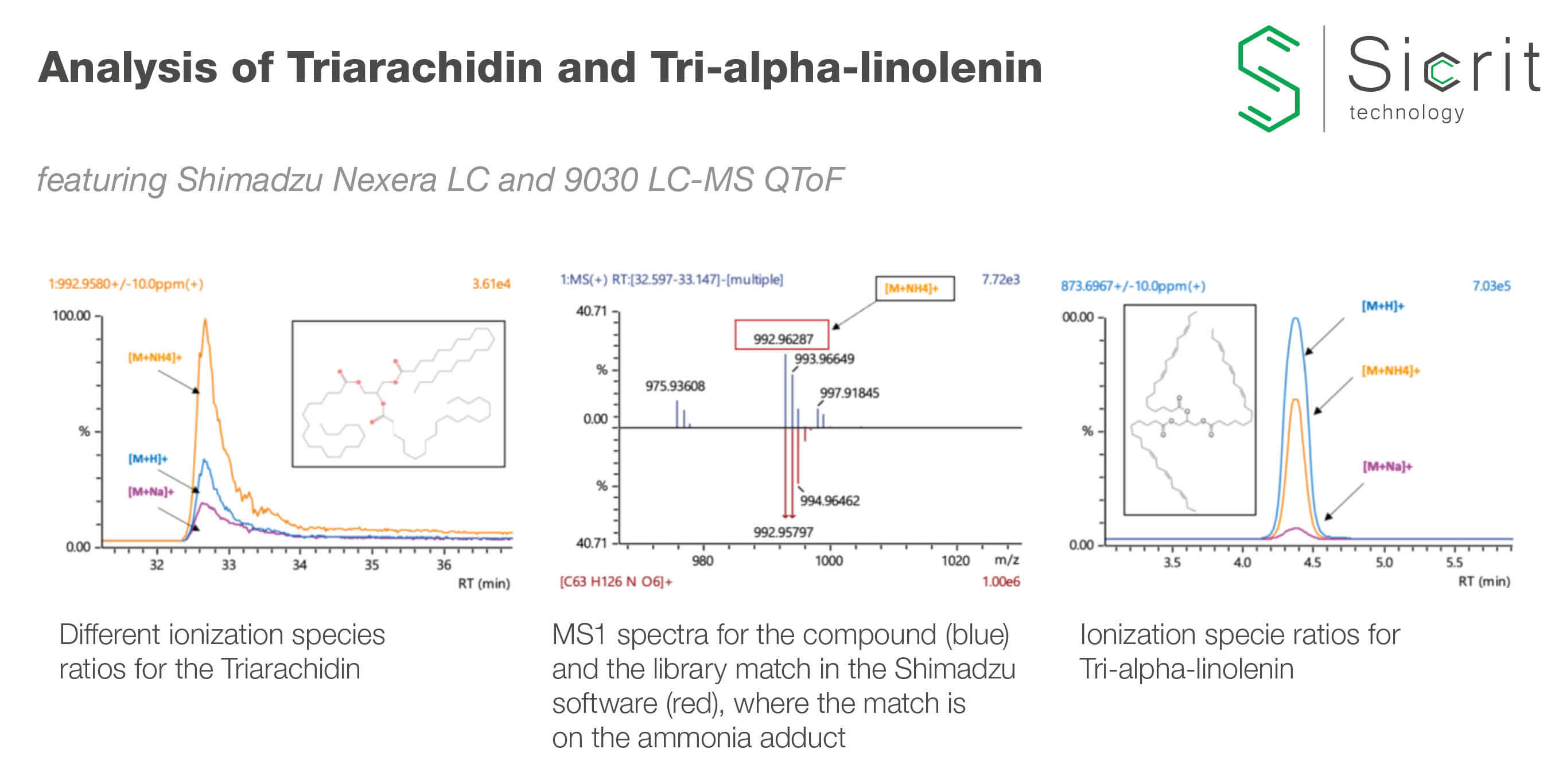
In this set of measurements, we demonstrate the detection capabilities of 8 different Triacyl-glycerides of varying length and saturation with LC-SICRIT®-HRMS. Here we show how specific disadvantages of the currently used methods can be addressed effectively with our source, particularly when analyzing the non-polar lipids like those belonging to the TAG lipid class.
Though lipids and lipid-like structures are known to be an integral part of the inherent metabolism of living creatures, it was thought that these compounds may not be as crucial as other small molecule metabolites of interest in the field of metabolomics. However, in recent years, the data has shown otherwise, showing that lipids play an integral role in cell signaling, in the overall function of the immune system, and in overall health of the brain particularly when it comes to oxidized lipids and the relation to global inflammation. These new findings are some of the many reasons the study of lipidomics has risen in popularity within metabolomics and corresponding fields. The typical analysis for lipids is HPLC-ESI-HRMS, which has become the standard within the metabolomics community. However, there are still a few disadvantages that surface from this method pertaining to ion suppression, multiple charge states, and increased insource fragmentation. Additionally, the range of ionization that can be obtained does not fully cover both the non-polar and highly polar lipids in a single method. Here, we propose a new method utilizing the SICRIT® ionization source that can combat some of these lingering issues. With the SICRIT® technology we can softly ionize a dynamic range of components, while introducing only singly charged species to the detector. Due to these qualities of our ionization technology we are able to minimize or completely eliminate the disadvantages present in the ESI method such as suppression effects, in-source fragmentation, and multiple charged ions.





